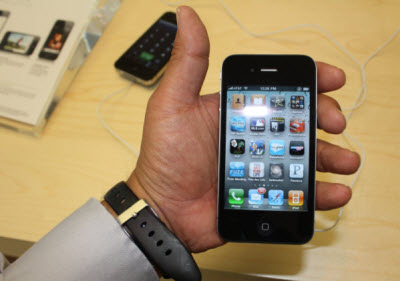
A drop in the early upgrade pricing was at least partially responsible for the success of the iPhone 4. AT&T made anyone with an early upgrade date before the end of 2010 eligible to purchase the iPhone 4 at the flat cost of $199 and $299 for the 16GB and 32GB versions. Apple’s latest smartphone sold out in almost every store across the country and required a two-week waiting period for most people looking to upgrade. But that’s because AT&T gave just about every iPhone user — both 3G S and 3G owners — the option to upgrade to the iPhone 4 at a steep discount.
[aditude-amp id="flyingcarpet" targeting='{"env":"staging","page_type":"article","post_id":252574,"post_type":"story","post_chan":"none","tags":null,"ai":false,"category":"none","all_categories":"business,mobile,","session":"C"}']AT&T had earlier charged iPhone 3G users an extra $200 to upgrade to the 3G S before their two-year contract had expired. AT&T eventually offered 3G owners the chance to upgrade to a 3G S at the same discounted price. The move followed customer criticism about having to pay a $200 fee to upgrade from the iPhone 3G to the iPhone 3GS before their two-year contract was over. AT&T had since slashed the early upgrade fee, meaning the iPhone 4 only cost
The company might have shot itself in the foot by removing the $200 early upgrade fee initially. Any massive change — like bringing back the old $200 upgrade fee — in the upgrade fee for the iPhone would end up causing a huge public backlash against the company. AT&T likely chose to increase the price incrementally to see if it can recoup some of the costs of subsidizing the iPhone 4 — and the next version of the iPhone.
VentureBeat's mission is to be a digital town square for technical decision-makers to gain knowledge about transformative enterprise technology and transact. Learn More
